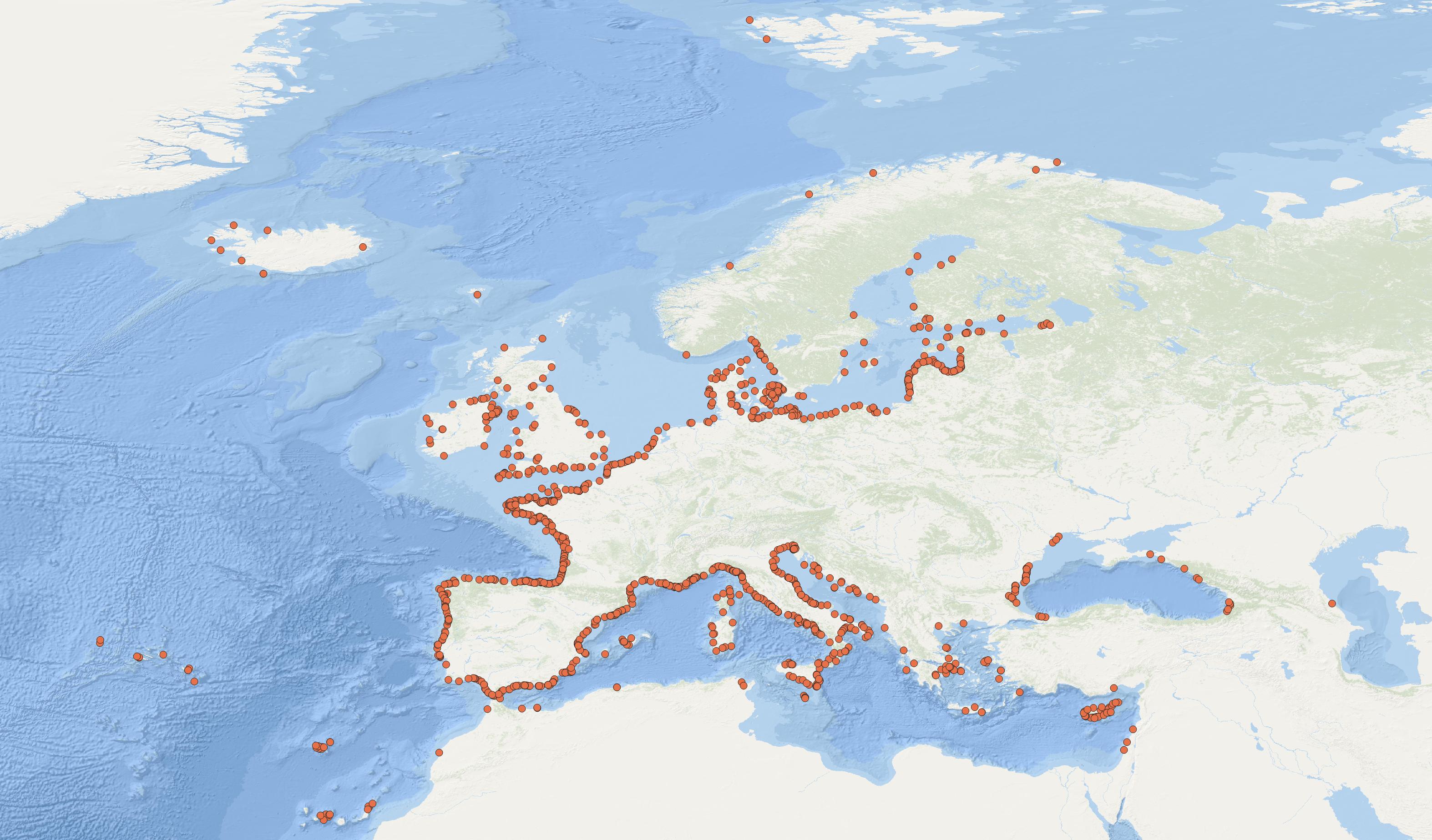Beach litter abundance
Type of resources
Available actions
Topics
Keywords
Contact for the resource
Provided by
Years
Formats
Representation types
-
This dataset includes data of plastic litter collected by citizens and students during 12 campaigns that were organised in Crete (Greece) during the period May 2022 – May 2023. The campaigns were organized within the framework of the NAUTILOS Horizon 2020 project. More specifically the number of plastic litter items per category (using the J code List of the EMODnet Chemistry Thematic Lot n°4) was recorded together with information about the location, date, surface area covered, data contributor and some environmental characteristics (sediment, weather, surroundings).
-
Data obtained on Saidia beach
-
Beach litter monitoring data obtained at Bele Skale beach in Slovenia on 26/01/2024 in project REMEDIES
-
Beach litter monitoring data from the Swedish coastline of Kattegat, the Sound and the Baltic Sea
-
The dataset contains data on beach litter items from 11 Greek beaches, 32 individual surveys and the accompanying metadata.
-

EMODnet Chemistry aims to provide access to marine chemistry data sets and derived data products concerning eutrophication, ocean acidification, contaminants and litter. The chosen parameters are relevant for the Marine Strategy Framework Directive (MSFD), in particular for descriptors 5, 8, 9 and 10. The dataset contains standardized, harmonized and validated data collections from beach litter (monitoring and other sources). Datasets concerning beach and seafloor litter data are loaded in a central database after a semi-automated validation phase. Once loaded, a data assessment is performed in order to check data consistency and potential errors are corrected thanks to a feedback loop with data originators. For beach litter, the harmonized datasets contain all unrestricted EMODnet Chemistry data on beach litter, including monitoring data, data from cleaning surveys and data from research. A relevant part of the monitoring data has been considered for assessment purposes by the European institutions and therefore is tagged as MSFD_monitoring. EMODnet beach litter data and databases are hosted and maintained by 'Istituto Nazionale di Oceanografia e di Geofisica Sperimentale, Division of Oceanography (OGS/NODC)' from Italy. Data are formatted following Guidelines and forms for gathering marine litter data, which can be found at: https://doi.org/10.6092/15c0d34c-a01a-4091-91ac-7c4f561ab508. The updated vocabularies of admitted values are available in https://nodc.ogs.it/marinelitter/vocab. The harmonized datasets can be downloaded as EMODnet Beach litter data format Version 7.0, which is a spreadsheet file composed of 4 sheets: beach metadata, survey metadata, animals and litter.
-
Since 2013, SeaCleaner has involved an ever-growing number of students, researchers and volunteer citizens in monitoring the Anthropogenic Marine Debris (AMD) found stranded on our shores, by means of a protocol developed following both the Marine Strategy Framework Directives (MSFD) and the OSPAR protocol previously used and tested for several years, especially in Northern Europe. The original protocol, used for collecting and cataloguing the different types and sizes of such waste, has been simplified and adapted to the local specificities identified on our Italian beaches, in the locations monitored, to allow it to be used by volunteers and also by high school students, thus combining the research side with the educational side. The dataset proposed here collects data acquired from 2014 to 2015 in the italian coastal area of Pelagos Sanctuary. In detail into: Cinque Terre National Park, Porto Venere Natural Regional Park, Lerici beach, Migliarino-San Rossore-Massaciuccoli Regional Natural Park and Pianosa island included in Tuscan Archipelago.
-
The dataset contains information regarding marine litter on the Romanian beaches, collected during 3 seasons: winter, spring and autumn. The methodology used is MSFD related and 9 beach sectors were monitored, from Vama Veche (South) to Edighiol (DanuBe Delta Biosphere Reserve).
-
Beach litter monitoring data from Kattegat, the SOund and the Blatic Sea
-
Data collected in frames of MSFD Marine Litter Monitoring from Estonian beaches (2017-2022)
 EMODnet Product Catalogue
EMODnet Product Catalogue